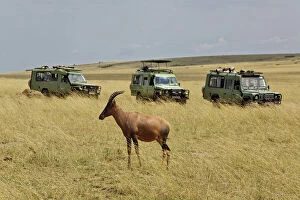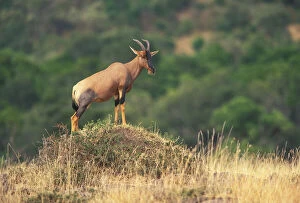Korrigum Collection
Korrigum, also known by its scientific name Damaliscus korrigum, is a fascinating species of antelope found in the grasslands and savannas of Africa
All Professionally Made to Order for Quick Shipping
Korrigum, also known by its scientific name Damaliscus korrigum, is a fascinating species of antelope found in the grasslands and savannas of Africa. With its distinctive appearance and unique behaviors, the Korrigum captures the attention of wildlife enthusiasts and researchers alike. One remarkable feature of the Korrigum is its striking coat pattern. Sporting a reddish-brown hue with white underparts, this antelope stands out amidst its surroundings. Its body is adorned with vertical stripes that add to its allure, making it easily distinguishable from other species. Standing at an average height of 4 feet at the shoulder and weighing around 400 pounds, these herbivores are built for agility and speed. Equipped with long legs designed for swift movements across vast distances, they can reach impressive speeds when evading predators or during their seasonal migrations, and are highly social animals that form large herds consisting of both males and females. These herds can consist of hundreds or even thousands of individuals. Within these groups, intricate hierarchies exist where dominant males establish their authority through displays such as head shaking or locking horns in friendly competitions. Their diet primarily consists of grasses but may include leaves from shrubs or trees during dry seasons when food sources become scarce. This adaptability allows them to thrive in various habitats ranging from floodplains to woodlands. However, despite their resilience and adaptability, Korrigums face numerous threats in today's world. Habitat loss due to human activities like agriculture encroachment poses significant challenges for their survival. Additionally, illegal hunting for bushmeat trade further exacerbates population decline. Conservation efforts play a crucial role in safeguarding these magnificent creatures' future existence on our planet. By raising awareness about the importance of preserving natural habitats and combating poaching activities through stricter regulations and enforcement measures (DDE-90020167), we can ensure the continued presence of Korrigums in their native African landscapes.

















